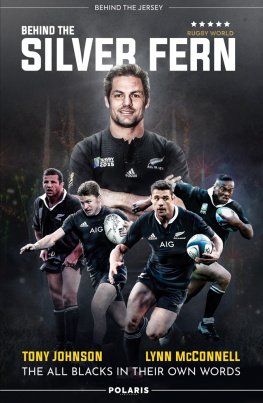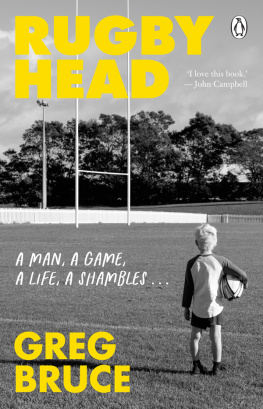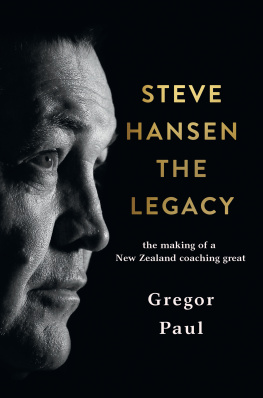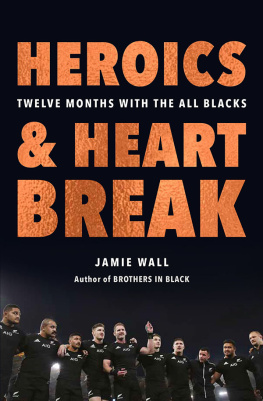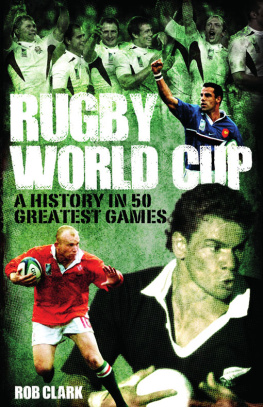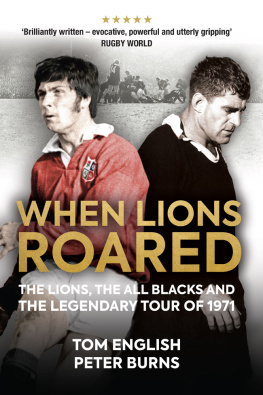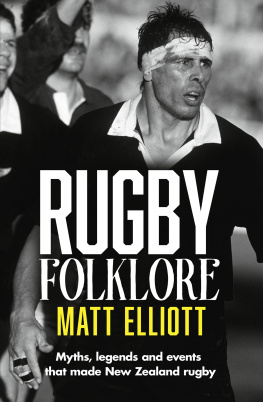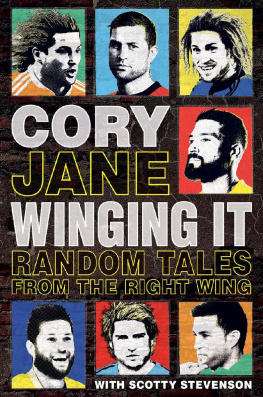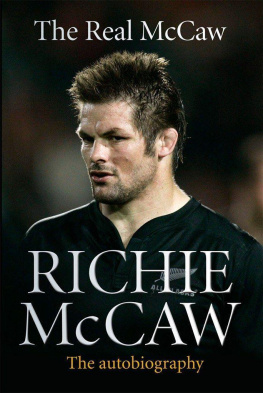This edition first published in 2020 by
POLARIS PUBLISHING LTD
c/o Aberdein Considine
2nd Floor, Elder House
Multrees Walk
Edinburgh
EH1 3DX
Distributed by
ARENA SPORT
An imprint of Birlinn Limited
www.polarispublishing.com
Text copyright Tony Johnson and Lynn McConnell, 2016 and 2020
ISBN: 9781913538200
eBook ISBN: 9780857903334
First published 2016
The right of Tony Johnson and Lynn McConnell to be identified as the authors of this work has been asserted by them in accordance with the Copyright, Designs and Patents Act 1988.
All rights reserved. No part of this publication may be reproduced, stored or transmitted in any form, or by any means electronic, mechanical, photocopying, recording or otherwise, without the express written permission of the publisher.
Interviews have been edited for clarity.
The views expressed in this book do not necessarily reflect the views, opinions or policies of Polaris Publishing Ltd (Company No. SC401508) (Polaris), nor those of any persons, organisations or commercial partners connected with the same (Connected Persons). Any opinions, advice, statements, services, offers, or other information or content expressed by third parties are not those of Polaris or any Connected Persons but those of the third parties. For the avoidance of doubt, neither Polaris nor any Connected Persons assume any responsibility or duty of care whether contractual, delictual or on any other basis towards any person in respect of any such matter and accept no liability for any loss or damage caused by any such matter in this book.
Every effort has been made to trace copyright holders and obtain their permission for the use of copyright material. The publisher apologises for any errors or omissions and would be grateful if notified of any corrections that should be incorporated in future reprints or editions of this book.
British Library Cataloguing-in-Publication Data
A catalogue record for this book is available on request from the British Library.
Designed and typeset by Polaris Publishing, Edinburgh
Printed in Great Britain by MBM Print, East Kilbride
ACKNOWLEDGEMENTS
Firstly thanks to my colleague Lynn McConnell for being calm and organised through the whole process... one of us needed to be.
To Peter Burns at Polaris Publishing, thank you for this wonderful opportunity. To my wife Sarah and daughter Lily for their love, encouragement and patience.
To Sarah Johnstone at Taonga, a special acknowledgement of your help in accessing the treasure trove that is New Zealands sound archive. Likewise to SKY TV (NZ) for access to their library, and to my friends Charlie Stone and Paul Neazor for their help.
Thank you to the players who recognised the scope of this project and so willingly shared their experiences.
For my part, this book is dedicated to everyone who pulled on the black jersey with the silver fern, but to three in particular. To my late and much missed friend John Drake, and to two great figures of New Zealand rugby who passed away during the time of writing, Jerry Collins and Jonah Lomu.
TJ
With thanks to my wife Barbara, to Gregor Paul, Tony Johnson, Ron Palenski, John Griffiths and to all those All Blacks who made themselves available for an hour or two to revisit past campaigns and to share their thoughts. Thanks also to Peter Burns and Polaris Publishing.
LM
ABOUT THE AUTHORS
TONY JOHNSON is a household name in New Zealand as a rugby commentator, TV sports presenter, rugby writer, journalist and radio broadcaster. He has covered Test match rugby, Super Rugby and the domestic game in New Zealand since 1987 as well as a variety of other sports from the Olympics and Commonwealth games to golf and tennis.
LYNN McCONNELL is a historian and freelance writer based in Auckland. This is his twenty-third book. After an extensive career in newspaper journalism with stints as sports editor of The Southland Times (Invercargill) and The Evening Post (Wellington), he was New Zealand editor of cricinfo.com and senior editor of sportal.co.nz.
INTRODUCTION
LEGACY OF THE JERSEY
Put simply, the question is: how? How has a country so isolated and so sparsely populated, been able, for so long, to achieve such ascendancy in a sport, over rivals with far greater population bases, and far superior financial, social and scientific resources?
It is often said that rugby suits New Zealanders. It appealed not only to British and Irish immigrants but also to the Maori who arrived before the great European migration. Rugby was a unifying factor between races. It also has massive appeal with those of Pacific Island origins who now make up around seven per cent of the New Zealand population. New Zealands Chief Justice Sir Richard Wild, himself a New Zealand Universities representative, said at the New Zealand Rugby Union seventy-fifth jubilee dinner: Our young men of that time [rugbys earliest days in NZ], not far removed from pioneering, needed a game that sharpened their senses and challenged their will, that demanded all their energy and exhausted all their vigour. Rugby exactly suited our climate and our soil. It matched the temperament of the New Zealander and in large measure it has moulded our national character. It is the team element that provides a spur for the weaker spirit, a curb for the selfish and a discipline for all. It treats every man as an equal from whatever background he comes. There is no yielding to status in a rugby tackle, no privilege in a scrum. It is just because rugby means what it does to New Zealanders that the All Black shines in the spotlight of public adulation at least till he bumbles a pass... But fame brings responsibility and the All Black at the top does well to remember that he carries in his hands tremendous power for good or ill. He owes it to the game that gives him fame to set a standard of sensible, disciplined living.
A member of what is regarded as the first New Zealand team, the 1884 side, Harry (later Sir Henry) Braddon had been schooled in rugby at Dulwich, emigrated to Tasmania where he became an Australian Rules player before moving to Invercargill in New Zealand to play rugby. He wrote presciently of the qualities that characterised rugbys hold on New Zealand. As a game it rewards accuracy far more than onlookers realise. The slightest fumble or stumble makes all the difference: and the split second often differentiates a score from a missed opportunity. There is much store for skilled generalship: and, in the matter of tactics, a novel method of attack, carefully rehearsed, easily may turn the scale. Sound teamwork is perhaps the best feature of all when the players are mainly concerned that the side shall score. Spectators instantly appreciate unselfish play: and as instantly denounce overdone individualism. After all, the game is a good school for later life where sound teamwork may seem so much in so many directions. The readiness to sacrifice self for the side is of the very essence of loyalty and patriotism. Many lasting friendships trace back to that football era.
It might have been Steve Hansen or Richie McCaw making the comments some things about New Zealands approach have never changed.
As one of the youngest societies to embrace professional sports culture, New Zealand was expected to be at a disadvantage to nations for whom professional sport was more than a hundred years old, such as England, Scotland, Wales, Ireland, France and Australia.
Amateurism was ingrained in New Zealand society and maintained by zealous administrators. No one was immune as one of the great captains of the All Blacks, Graham Mourie, found out when he was forced to forego his amateur status in order to profit from his biography. Yet, it was the ultimate compliment to the All Blacks that they were described as the most professional amateur team in the world. When the game went professional in 1995, New Zealand not only defied predictions that they would suffer, they improved their winning percentage.

